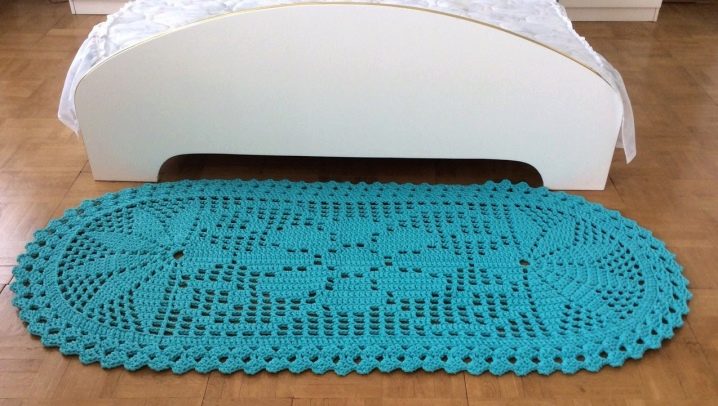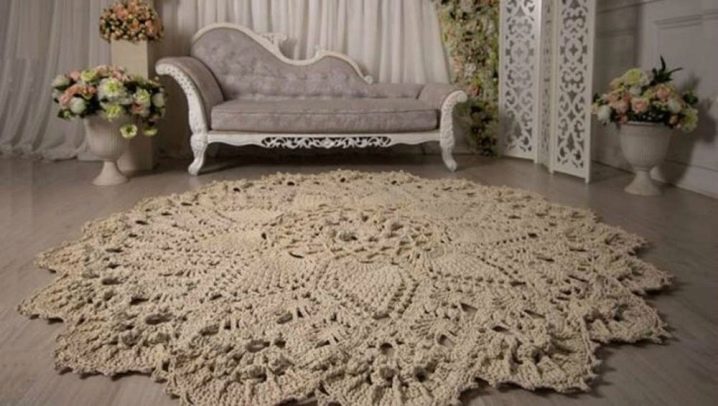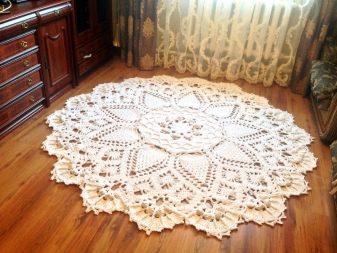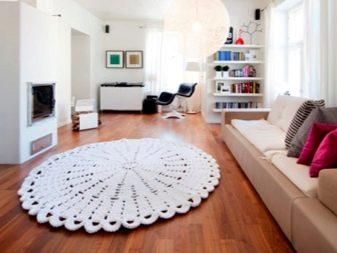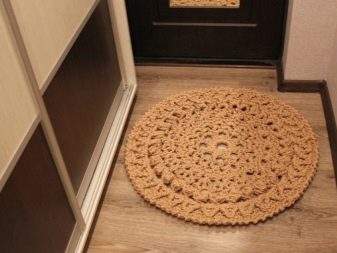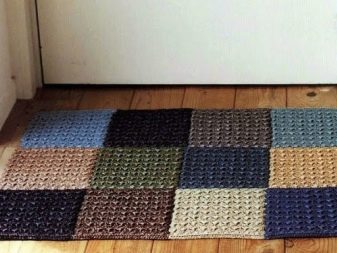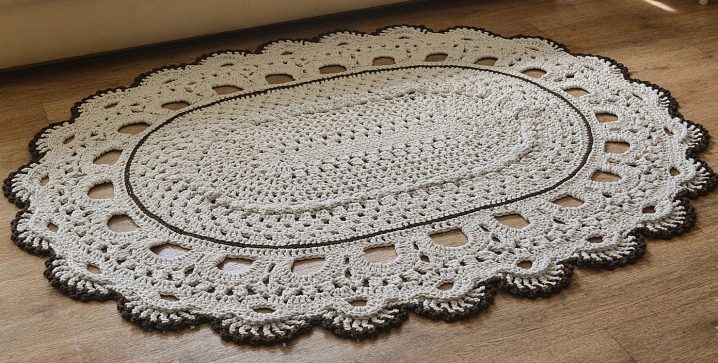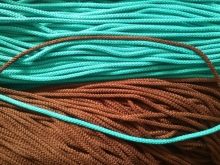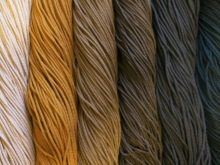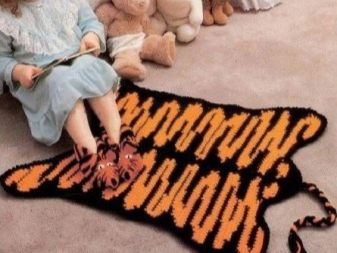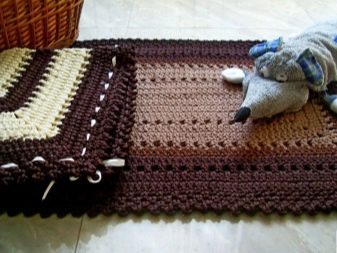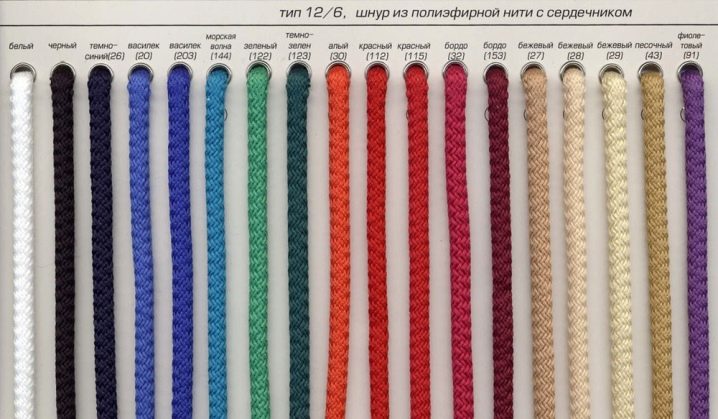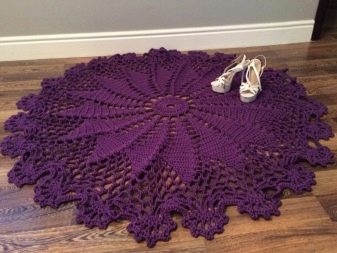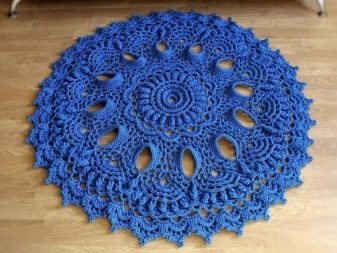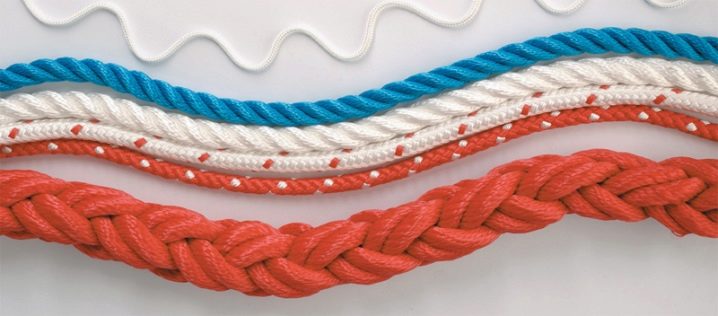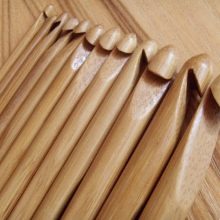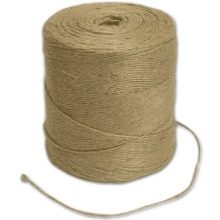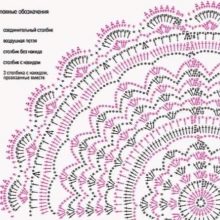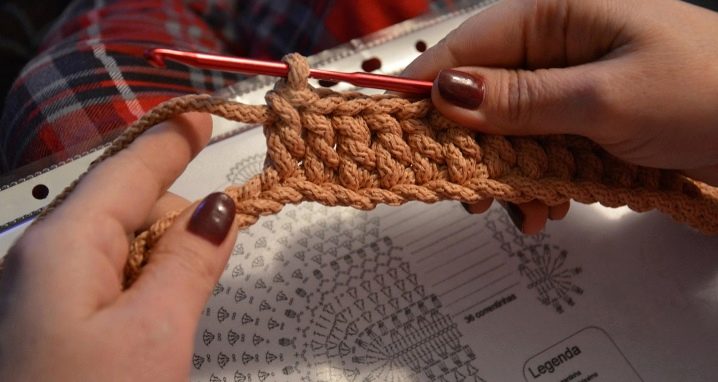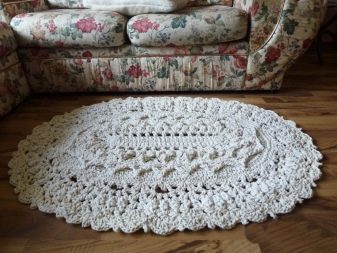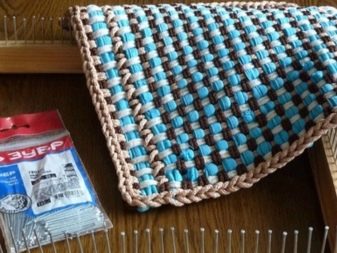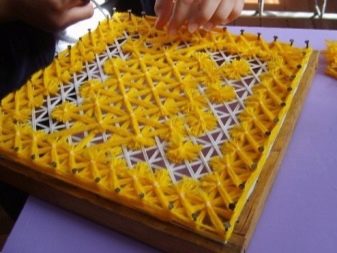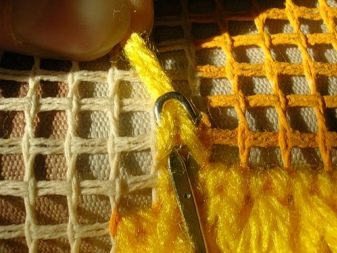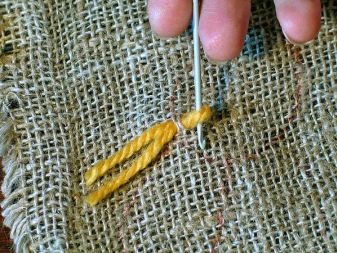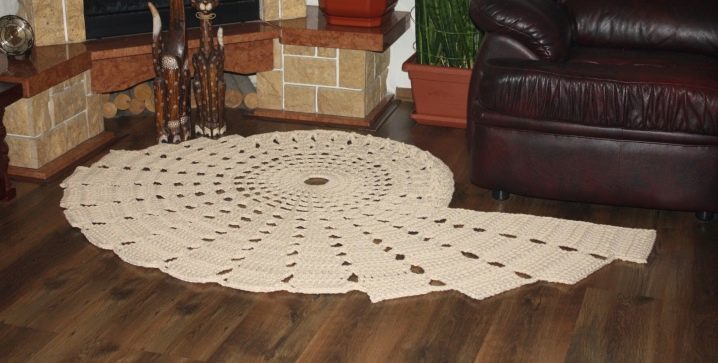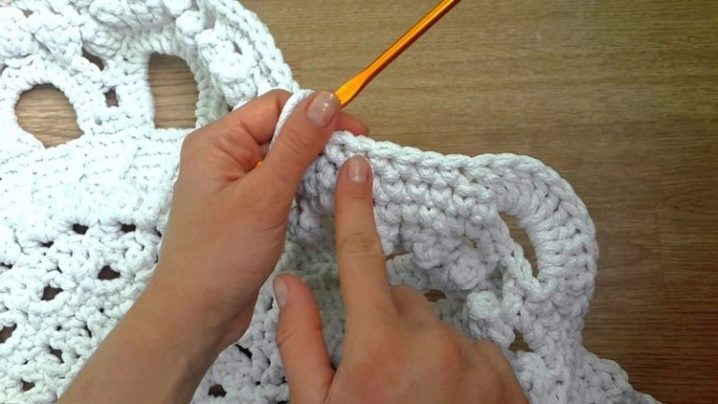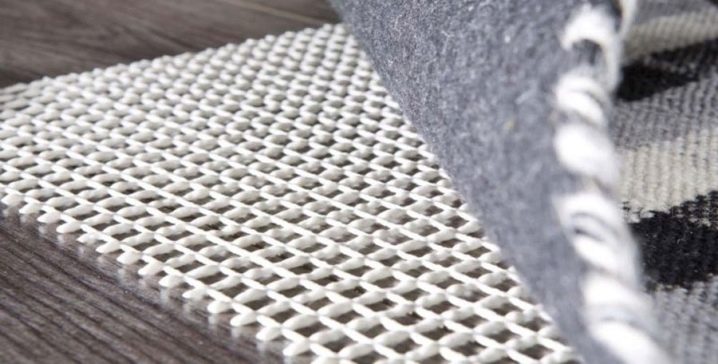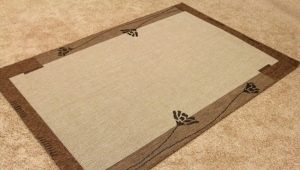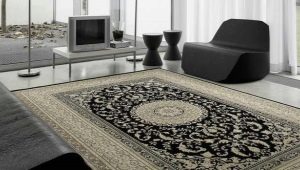Carpets, crocheted cord
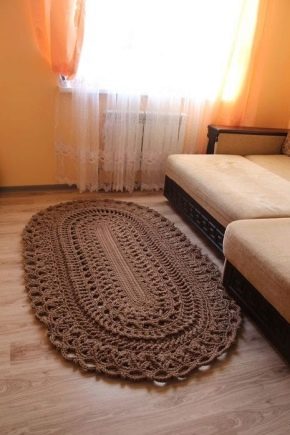
Handmade interior decorations are very popular. Carpet from the cord will bring comfort and originality to your home. Wicker products can be bought in the store or make yourself. Excellent product characteristics guarantee long years of service.
Round, oval or rectangular carpet can be used for its intended purpose or as a decorative element.
Application features
Volumetric, openwork carpet in the hallway or a large piece on the wall will perfectly complement the interior. The original appearance is not the only difference between a knitted carpet and a regular one.
There are a number of other distinguishing characteristics:
- Walking on the carpet stimulates points on the feet due to its massage effect.
- The cord is not afraid of moisture. The product can be laid even in the bathroom.
- Such a carpet will not become a dust collector. It can be wiped regularly with a damp cloth.
Despite the fact that the moisture does not cause much harm to the product, it still needs to be dried. So you will save the carpet from the development of padding or rotting cord. To enhance the orthopedic effect, it is recommended to lay the carpet in the kitchen, bedroom or living room. Massage during household chores will add vitality during the day.
Useful such a mat and for children. An interesting topography and a large variety of colors will help to create an excellent playground for the child. During the game, tactile sensations and fine motor skills will develop. The ability of the cord to not collect dust will eliminate the occurrence of allergic reactions.
Carpet in the popular style chebbi-chic can be laid in the hallway. An interesting option is to cover the entire corridor with a wicker product.
An important feature of the carpet is design versatility. It fits perfectly into the interior of any home.
The woven product has pros and cons. With the merits everything is very clear and quite a lot of them.
There are disadvantages that are not related to the properties of the product, but with the material and skill of the manufacturer:
- Material for weaving less available than the usual yarn. It is not always easy to find the desired color. Cord cost may vary depending on the composition.
- The first works can take a lot of time. This is due to a lack of experience.
How to choose a cord?
The choice of material depends not only on your personal preferences, but also on what kind of carpet you want to receive. Fans of natural products prefer cotton cord.
Features of this material:
- High consumption harness when knitting.
- The price of a cotton cord is higher than the synthetic equivalent.
- The finished product is quite solid.
- Working with such a cord is difficult, it is not recommended for beginners.
The latter property is due to the low elasticity of the cotton cord. Heavy and inflexible product fits well on the floor and is not deformed during operation. The color range of natural material is limited to natural tones.
It is recommended to make products for children from such a cord.
Synthetic cords are of two types: polypropylene and polyester. The first type is not very suitable for the manufacture of carpets. The material creaks unpleasantly during work and has an unnatural brilliance.The use of polyester cord is much more common. Polyester is soft and pleasant to the touch.
Polyester cord specifications:
- It is elastic and springy.
- The finished product is not deformed with prolonged and intensive use.
- Differs in pomp and interesting relief.
- Polyester fibers do not fade in the sun, do not collect dust. Static electricity is also not generated on it.
From such a synthetic cord you can weave a magnificent product. The texture depends on the selected pattern. The material gives vent to fantasy thanks to a wide range of colors. It is easy and pleasant to work with the material; even the master can cope with it without much experience.
There are two types of cords: with or without a core. Many experienced knitters recommend using the first option for weaving a carpet. This material is a thin braided cord. He holds his form perfectly.
A cord without a core will fit at first. The finished product will be less bulky and worse keeps its shape.
Another important parameter when choosing a cord is the diameter. The most popular option is 5 mm. There are manufacturers who implement cords with a diameter of 4.5 mm.Such products are a bit cheaper. In the finished product, a difference of 0.5 mm is not noticeable. You can use any cord, guided by their own preferences.
Experienced carpet knitters recommend using material from one manufacturer in one product.
This is due to the fact that companies may use different technologies and in the future the material will behave unpredictably.
Do it yourself
Creating a masterpiece with their own hands will not cause difficulties for skilled workers without experience. They can be made under the scheme or without it. The aesthetic appearance of the product depends on it.
For the manufacture of carpet with a diameter of 1100 mm you will need:
- Harness about 800 m;
- Crochet hook number 5 or 6;
- Scheme for carpet or napkin.
Buying a cord is better in proven stores - building or sewing. As a rule, well-known manufacturers guarantee high quality material. Knitting a pattern is quite a long and laborious exercise, but you get an interesting and embossed rug. For beginners, the use of simple schemes is recommended.
To make a round shape, you only need a napkin or any beautiful pattern.Such a rug will cause the least trouble.
Experienced craftswomen recommend starting your career with a round carpet.
An oval rug is knitted according to an individual scheme, and for the basis they take the scheme you like for a napkin. To do this, associate a chain of air loops with a lift. Link crochets to the two sides of the chain. This design replaces the original ring in the circuit for a round product.
A square product is more often knitted according to the principle of a “grandmother's square”. It consists in crochet crochets and air loops. To create an interesting pattern, you can combine cords of different tones. So it is convenient to knit not only small items, but also large ones. The second option is created according to the “patch of rags” principle. Tie a few small square blanks and fasten them together.
Crochet carpet knitting technique is quite simple and straightforward, but not the only one. Craftswomen use 2 more technologies:
Weave frame
The frame is chosen to fit the size of the future carpet or its fragments.
The work is done in several stages:
- On the frame you need to fill a number of nails with the same interval. Tighten the cord on the nails, this is the base cord.
- We pass long ribbons through the base in a staggered manner. Press the top row to the bottom.
- Reaching the top, you should tie knots and cut the carpet.
Weave on the grid
Such work is very laborious and laborious. To begin with, the base is woven with holes, which are then filled with loops from the rope. Tie a mesh of air loops of the desired diameter. Now, each cell is tied with a crochet. The density of the future carpet depends on the number of pillars.
Separately, you should consider the consumption of materials:
- A small carpet of square patches 55 to 55 cm will require about 200 meters of cord.
- A round carpet about 1 m in diameter contains about 600 m of a cord, and with a diameter of 1.5 m - 750 m of a cord.
- For a relief rectangular rug 70 by 80 cm, you will need about 600 m of material.
When calculating consumables, it is necessary to consider the following factors:
- Manner of knitting. With a tight binding, the consumption of the cord will be slightly less, and with a free binding, more.
- The complexity of the pattern. A large amount of relief increases the consumption of material. A smooth rug, on the other hand, requires less cord.
Useful tips
Every experienced craftswoman has her own secrets of creating the perfect product.
The main instructions for beginners:
- Find out the size of the future carpet is quite simple. Tie a pattern - a fragment of the pattern. Measure the height of one sample row and multiply by the number of rows in the pattern. Double the resulting number and get the diameter of the finished round carpet.
- In order to prolong the life of the floor carpet, go to the trick. Sew a special underlay on the bottom of the carpet. So the cord will not fray from constant contact with the floor.
Care for the finished product is quite simple. Products of small size are easily washed in a washing machine. Special chemical treatment of the cord is not required.
It is recommended to wash the mat in water up to 30 degrees. It dries in straightened form.
How to tie a polyester cord with your own hands, you can learn from the video below.
